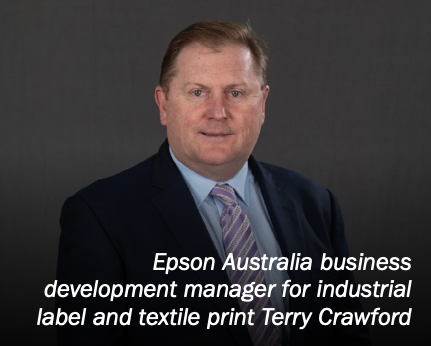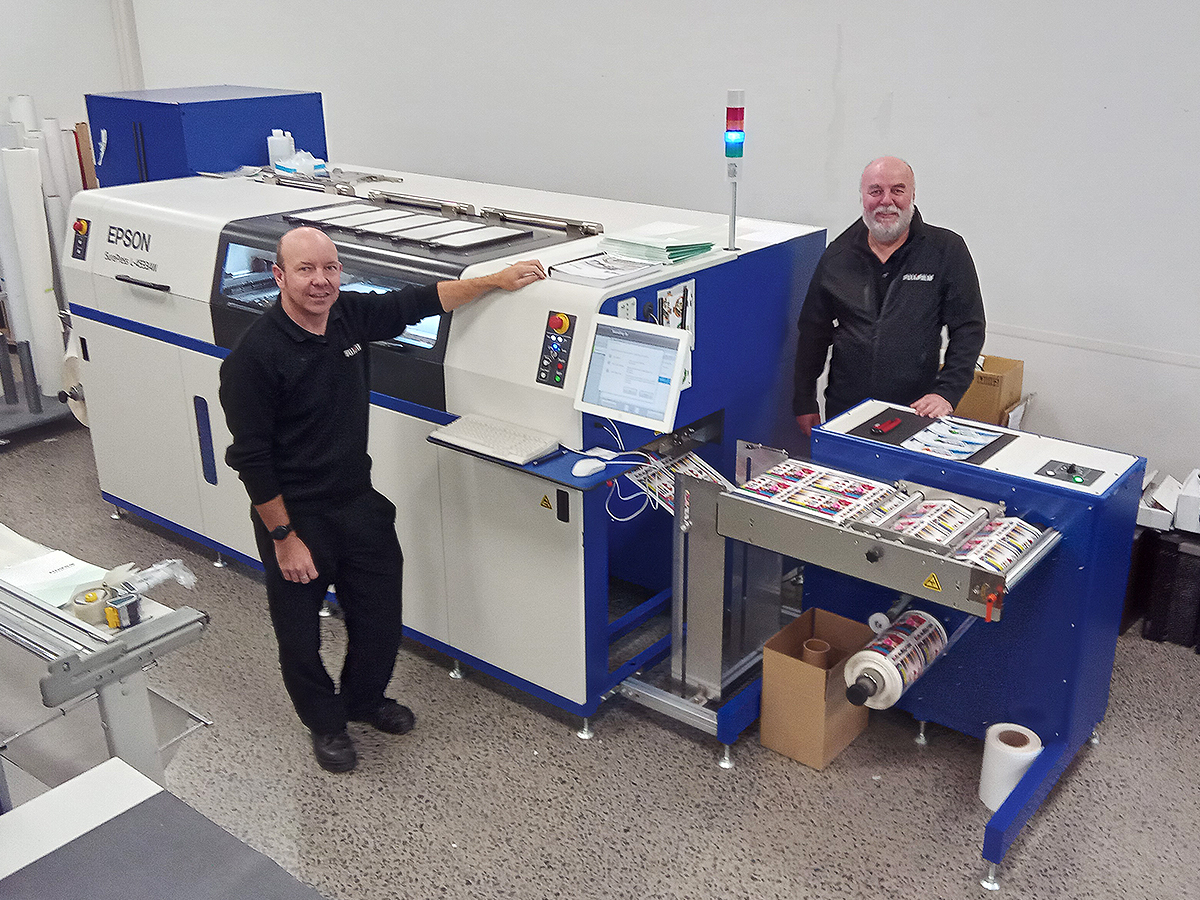New Zealand Printer had the opportunity to discuss industrial inkjet technology with Epson Australia’s business development manager for industrial label and textile print, Terry Crawford, to debunk some of the myths and shed light on the actual prowess of this groundbreaking technology.

Epson SurePress inkjet presses represent the forefront of industrial printing technology, offering a range of advanced digital label presses designed to meet diverse needs in the printing industry. Overall, each model in the SurePress series offers unique advantages while maintaining the core values of Epson: reliability, efficiency, and quality.
The SurePress L-6534VW, for instance, is built for high-speed, high-quality printing, with UV ink that allows for robust resistance.
The SurePress L-6534VW model, equipped with UV ink, offers precise quality control and enables printing on heat-sensitive materials due to its UV LED curing function.
The SurePress L-4533AW is designed for flexibility, using water-based pigmented inks to print on various substrates with an impeccable finish, making it perfect for labels and flexible packaging.
Addressing cost issue
A widespread belief is that industrial inkjet technology is costlier to maintain and operate. However, factors like high- speed production, minimal waste, lower maintenance requirements, and higher durability of printheads make it a cost- effective solution in the long run.
According to Crawford, “Two types of toners exist in the market: dry and liquid. Both technologies estimate costs by calculating the click rate. Epson’s business model doesn’t operate on a click rate. Instead, our customers purchase ink as they require it. To ensure accurate cost accounting, we advise customers to take three labels of varying coverage and run them through built-in SurePress cost calculator.”
Crawford further explained that Epson’s SurePress machines can handle variable web widths from 80mm to 330mm, which leads to additional cost and material savings. “Printers can select a substrate width which is most economical for the job”. This approach distinguishes us in the cost market.”
Though initial expenses might seem high, the total cost of ownership often turns out to be less over time.
“Purchasing a digital press entails a hardware price, an ink price, and a service price,” Crawford stated. “We traditionally offer a 12-month warranty with our SurePress machines. After that, customers can opt to buy a service agreement. During the printer’s lifespan, all parts are covered. Our presses also offer a lifespan of 10 years. We can guarantee the availability of spare parts for that entire period.”
Epson also provides an ink negotiation component as part of the equipment purchase. “Based on the client’s projected print volume, we can negotiate the most favourable ink price point,” Crawford said.
When making a purchase decision, service and support are significant considerations for any printer.
“In a toner business model, there are fixed costs for hardware, consumables, and service contracts,” Crawford said. “Customers must be mindful of the fine print as toner manufacturers may impose extra charges if print volumes are unmet. Epson operates differently – our customers buy inks when they need them.”
New levels of productivity
Another important factor when considering the overall cost of operations is machine uptime. Even small gains on each printing job can contribute to enormous operational improvement in the long term. Machine uptime is here critical indicator of productivity.
“Our presses are all remotely connected to a central server. This serves multiple purposes, including remote diagnostics, allowing our technicians to monitor the presses and troubleshoot any problems immediately.
“This data provides feedback on print volumes and ink usage. Our customers also have access to this information, which they can use for management purposes, such as tracking printing trends, ink usage, and waste,” said Crawford.
Additionally, Crawford emphasized the reliability of SurePress machines, saying, “Our average uptime is 98 per cent, a very high percentage that attests to the reliability of our presses.”
Industrial inkjet technology has evolved exponentially, breaking away from the limitations of its predecessors. Misconceptions still linger, but a closer look reveals a dynamic, precise, cost- effective, and environmentally friendly technology already shaping the future of large-scale printing.
For live demonstrations of the SurePress L-4533AW, please contact your account manager from Fujifilm NZ Ltd or Fujifilm Business Innovation NZ Ltd.


